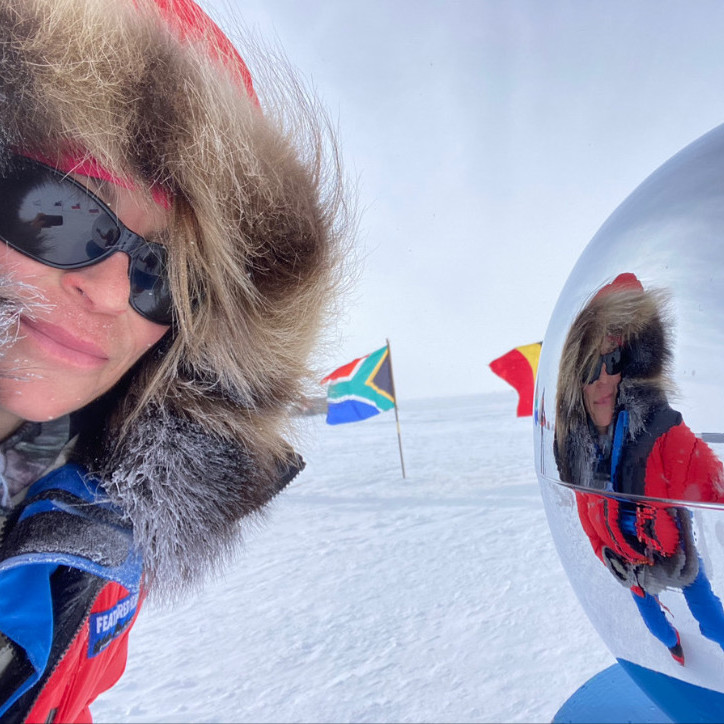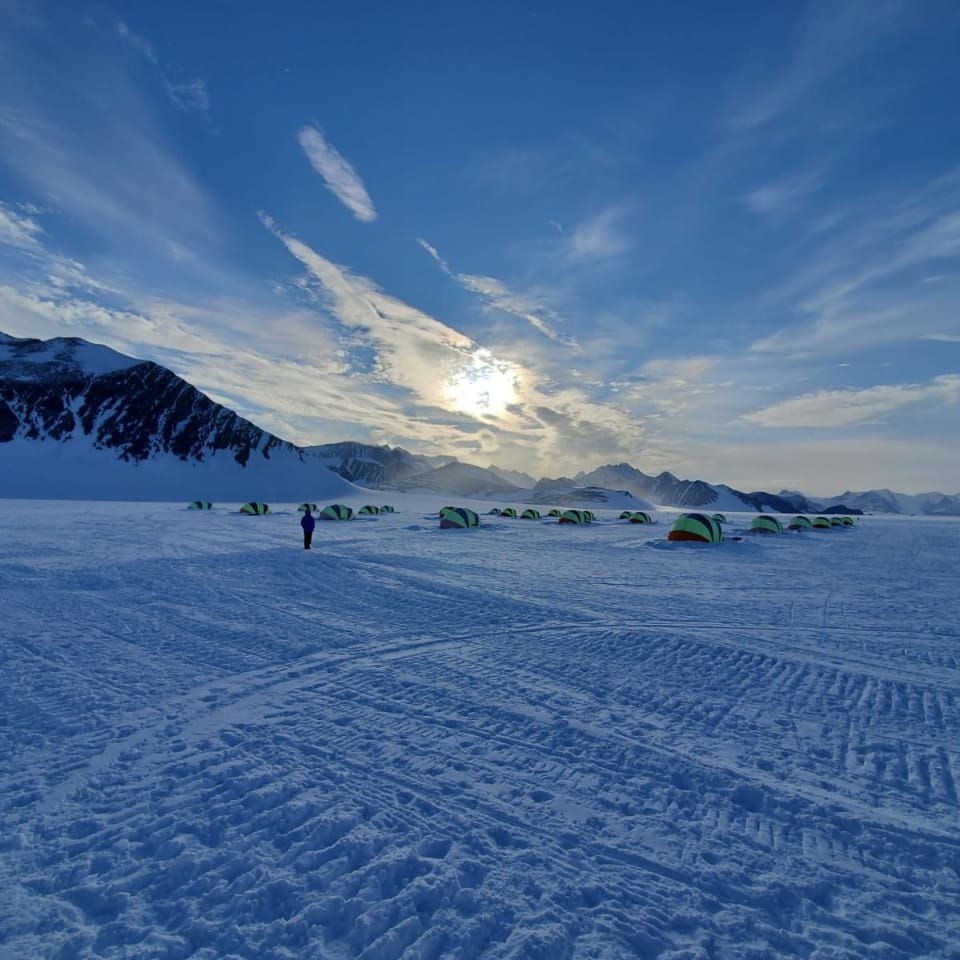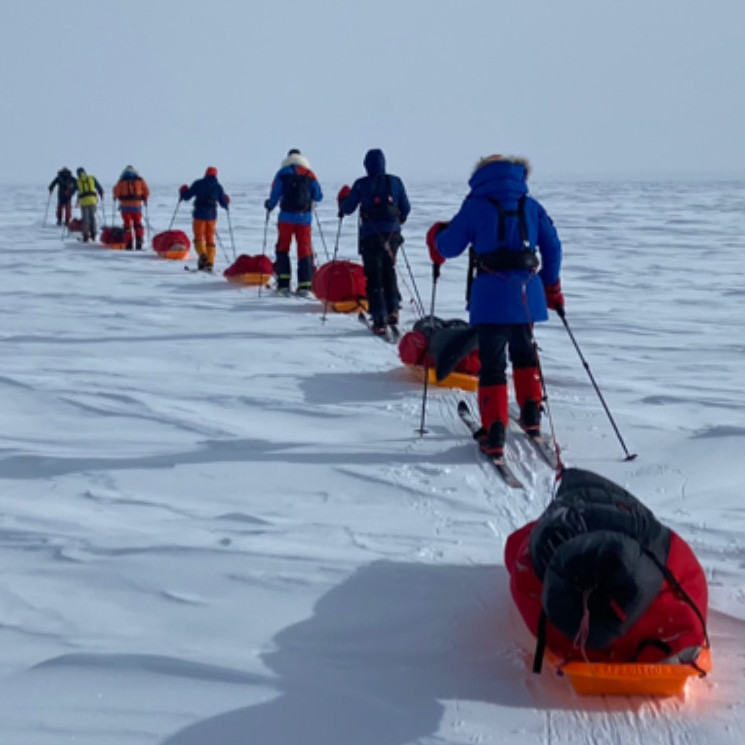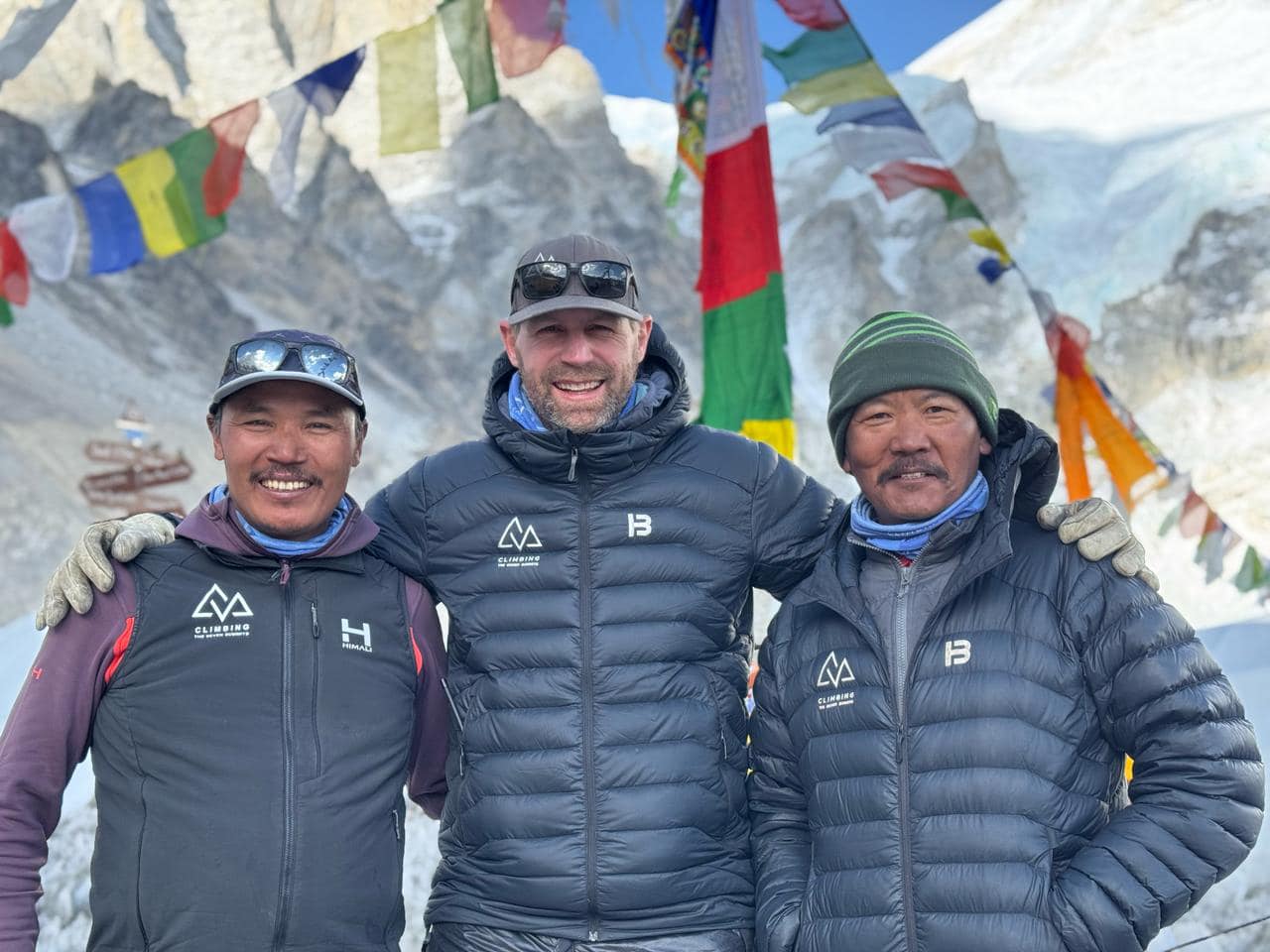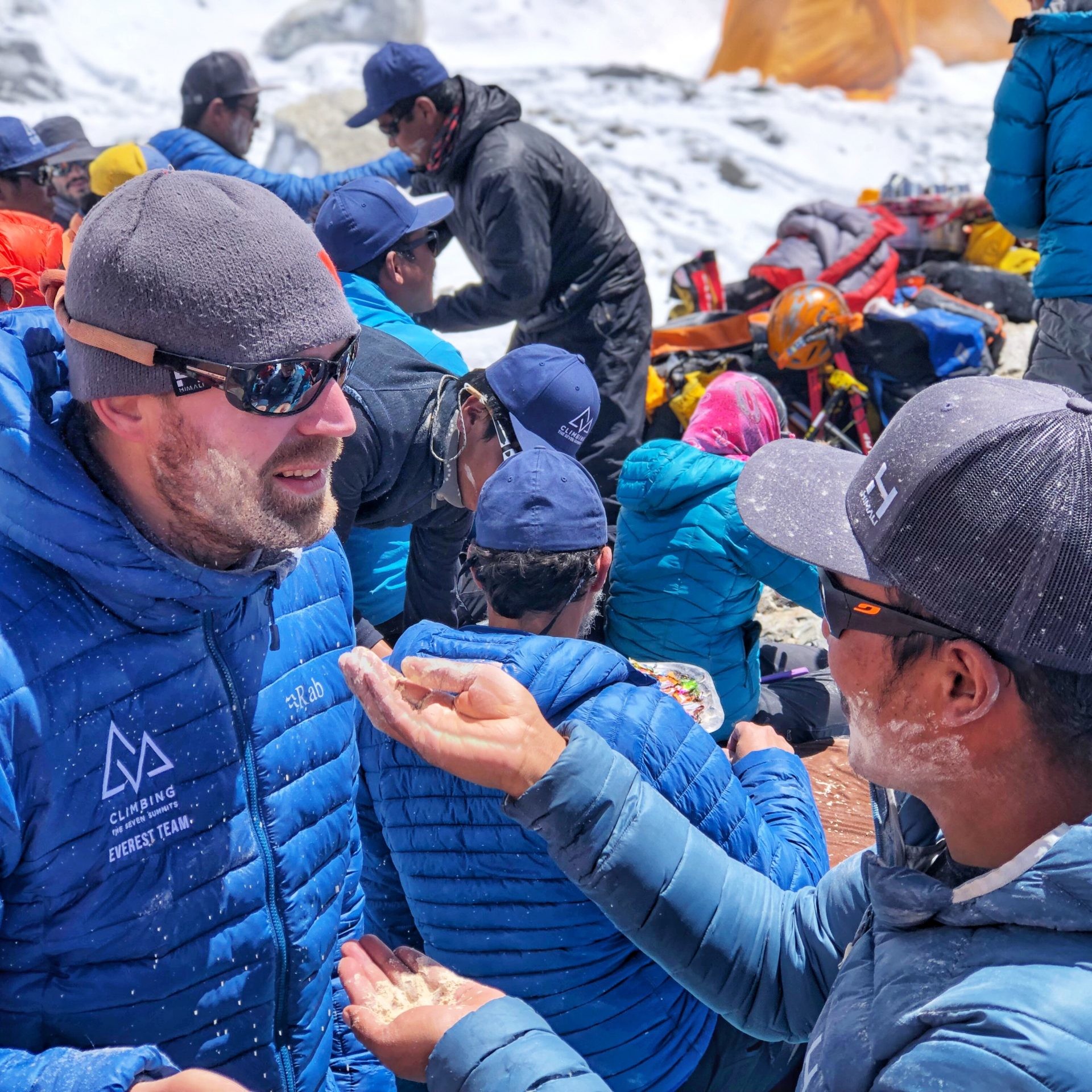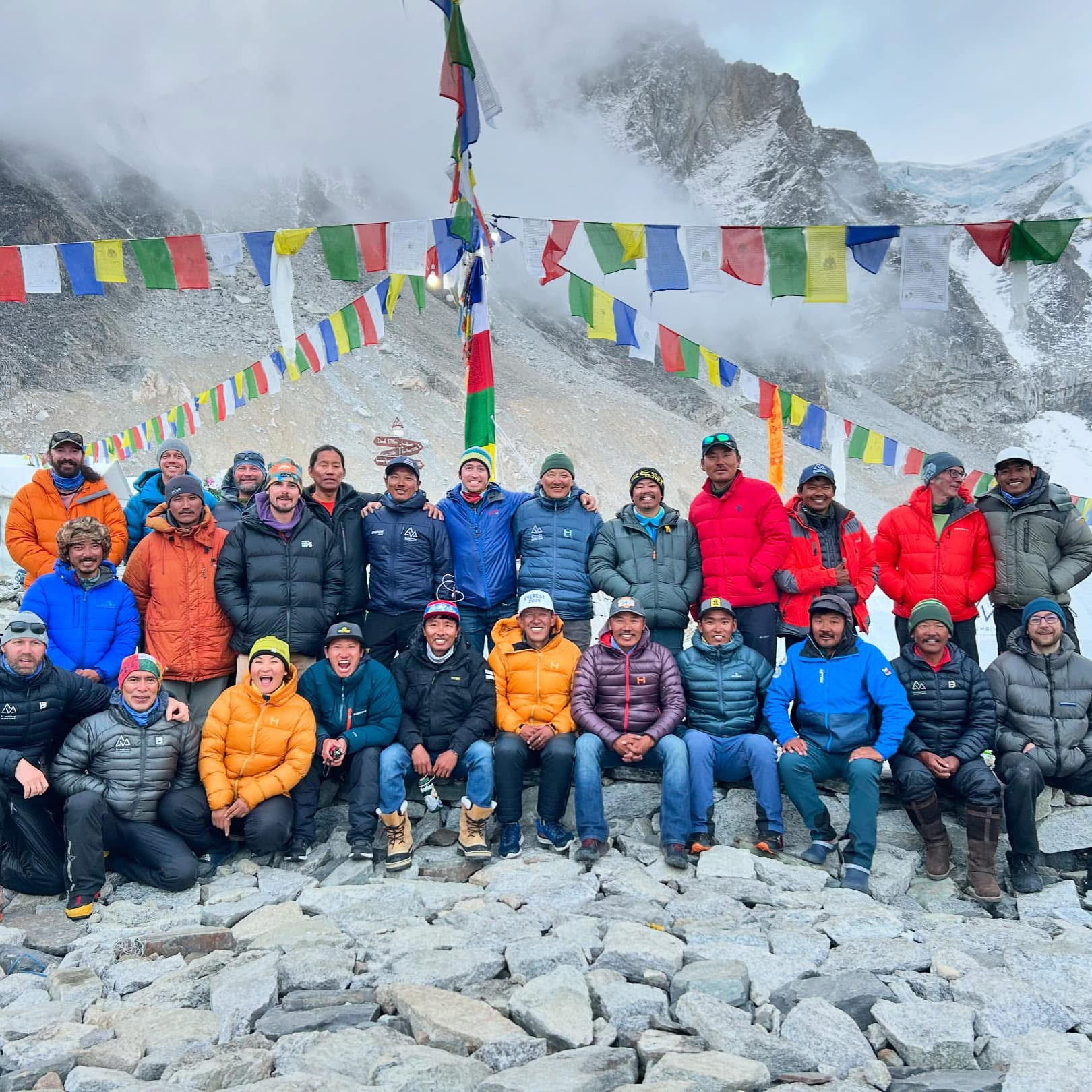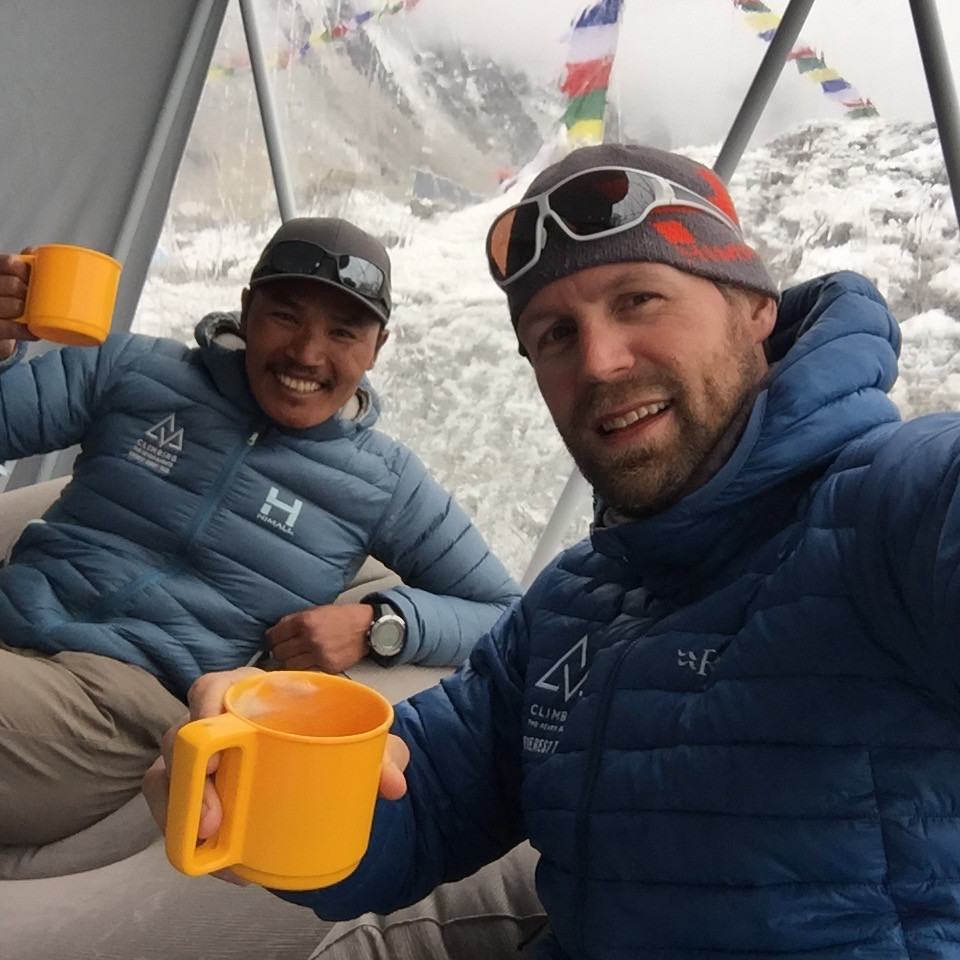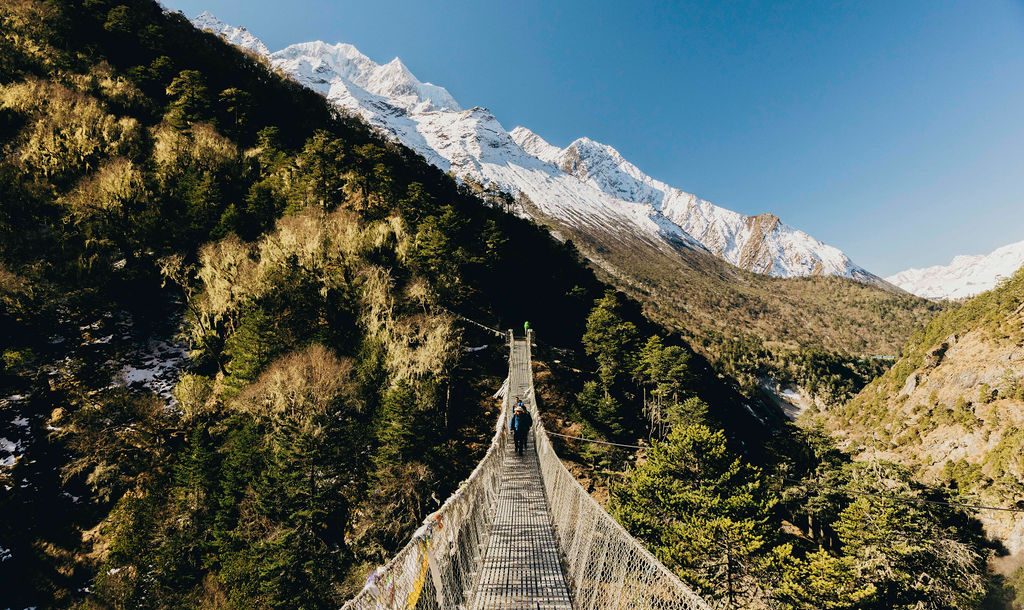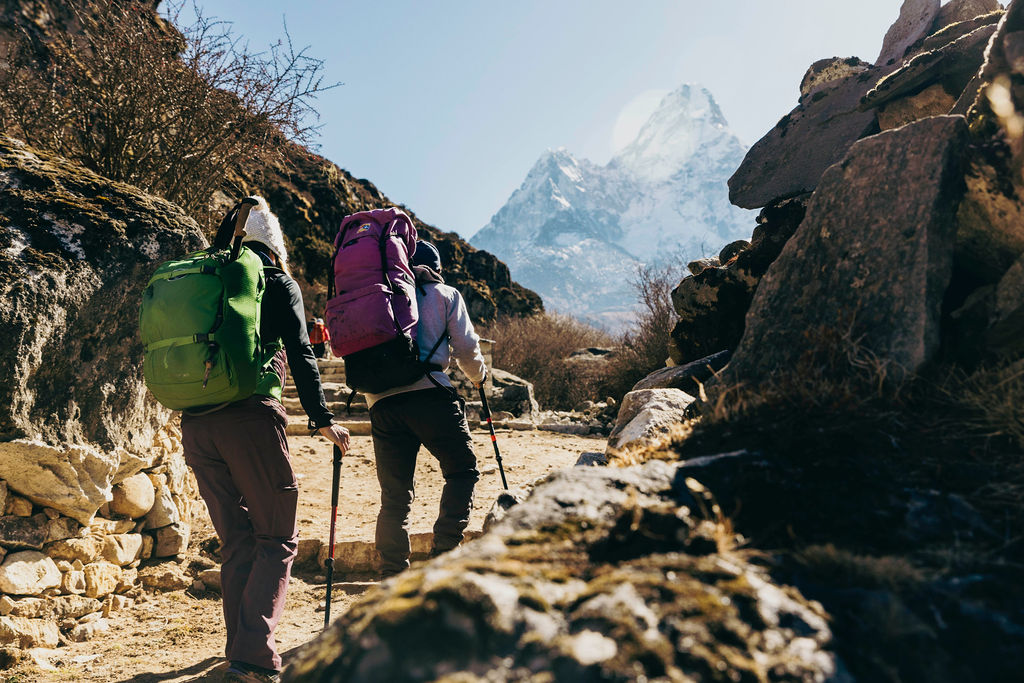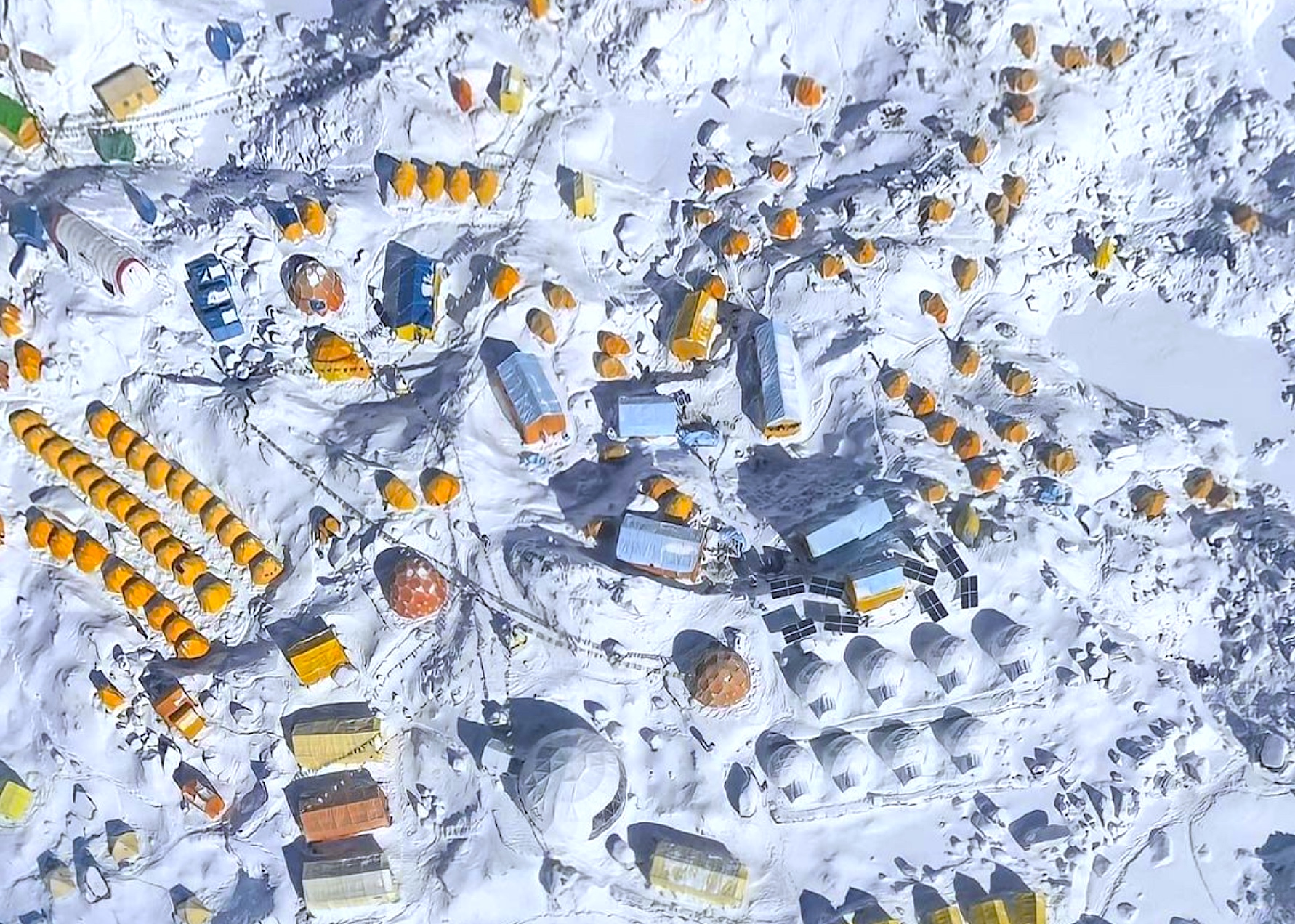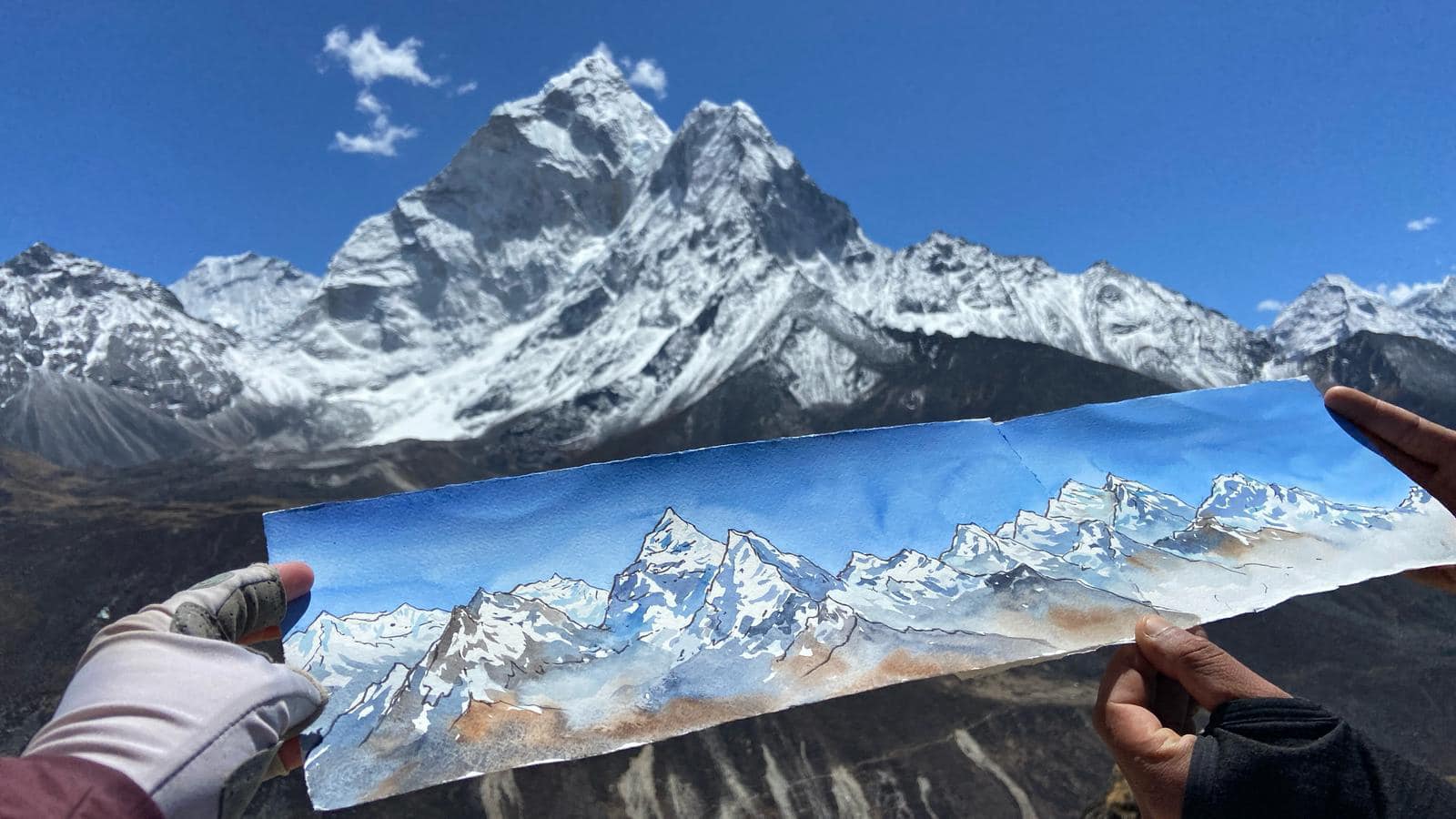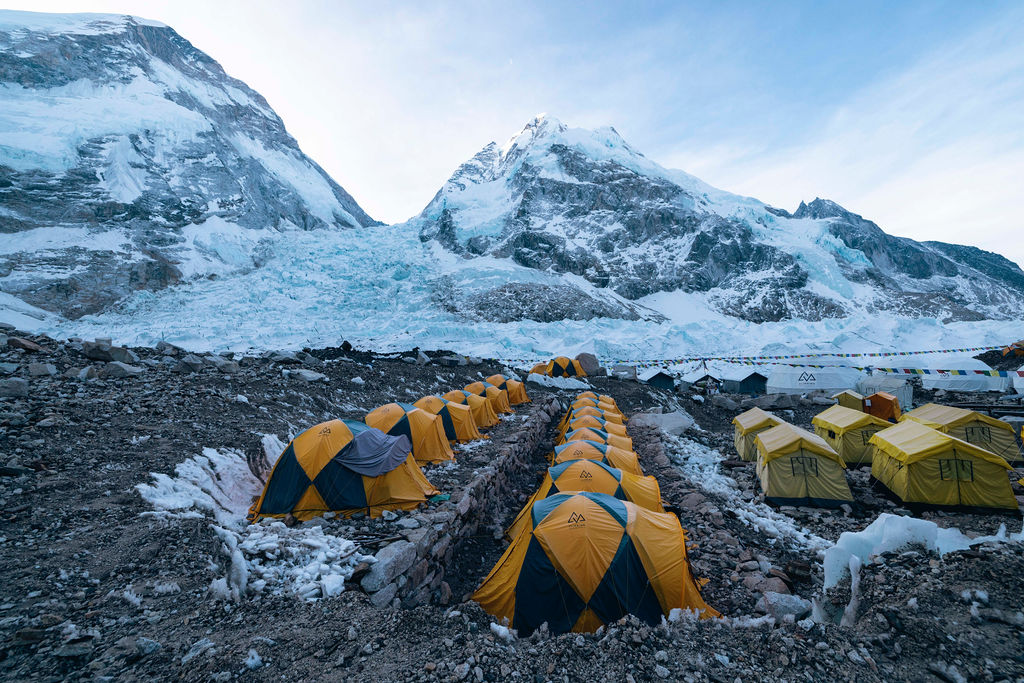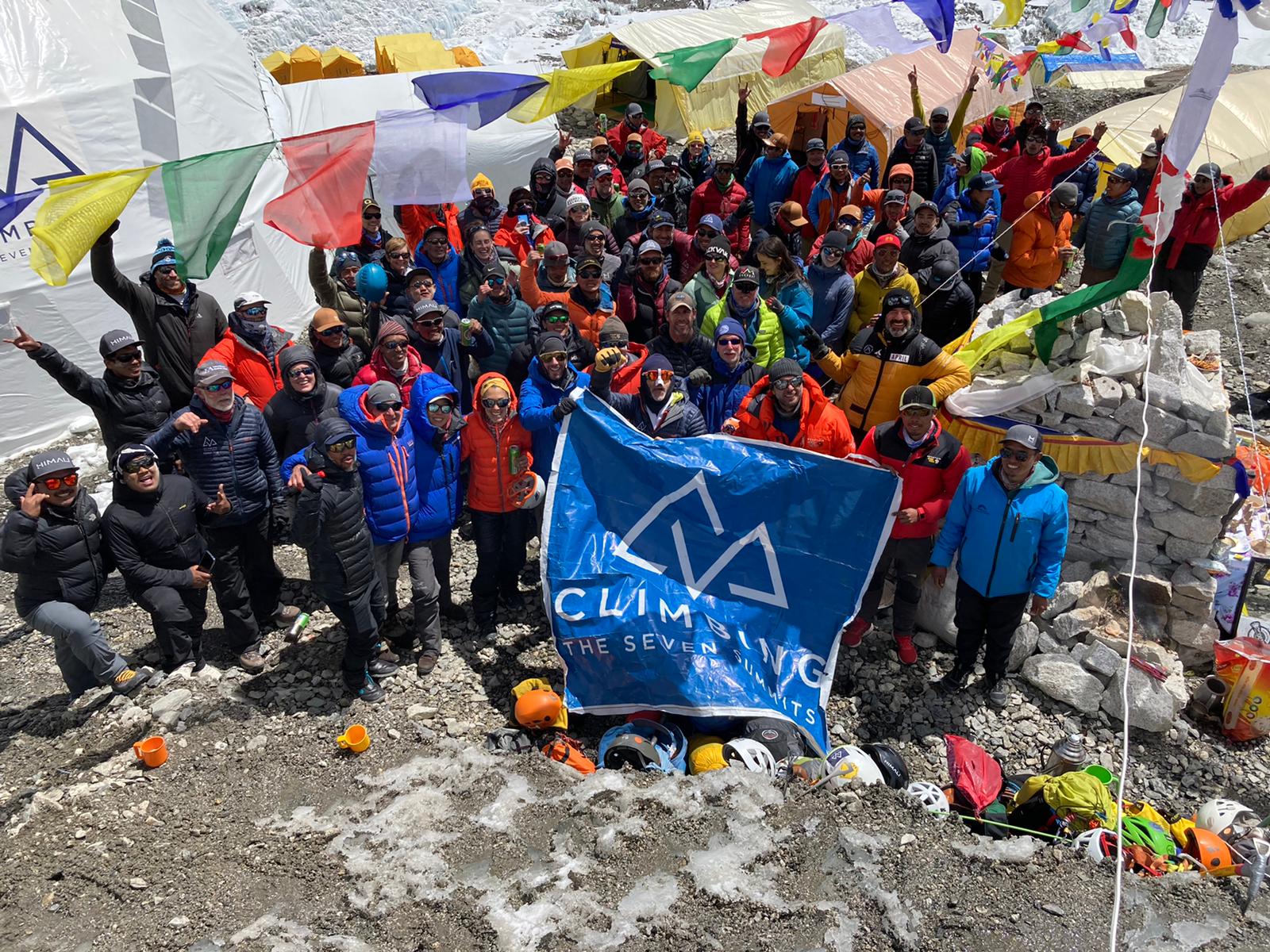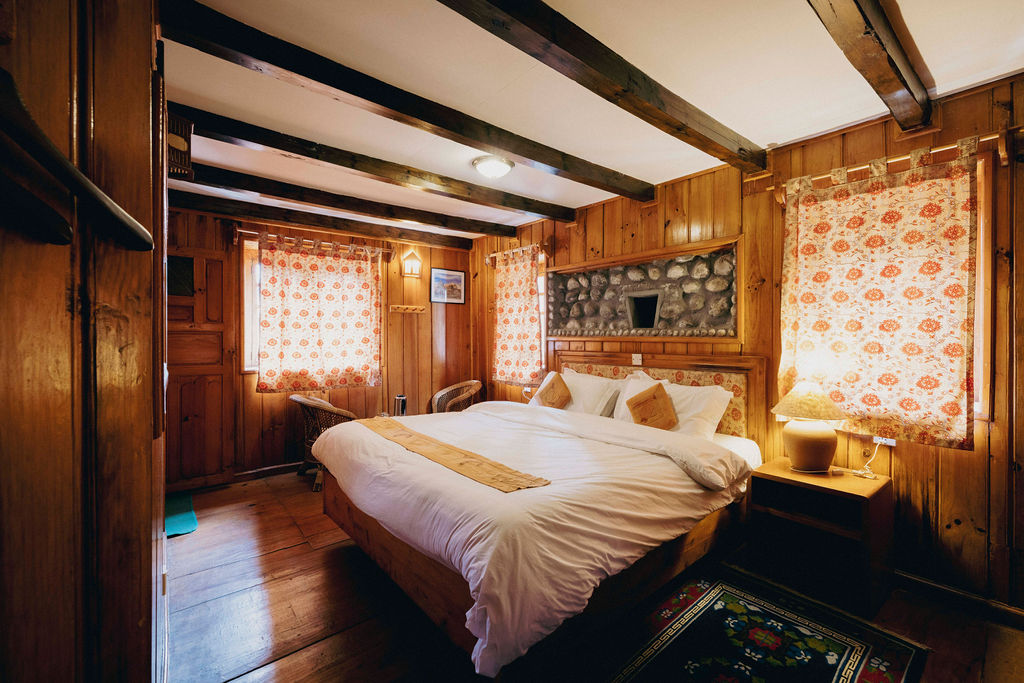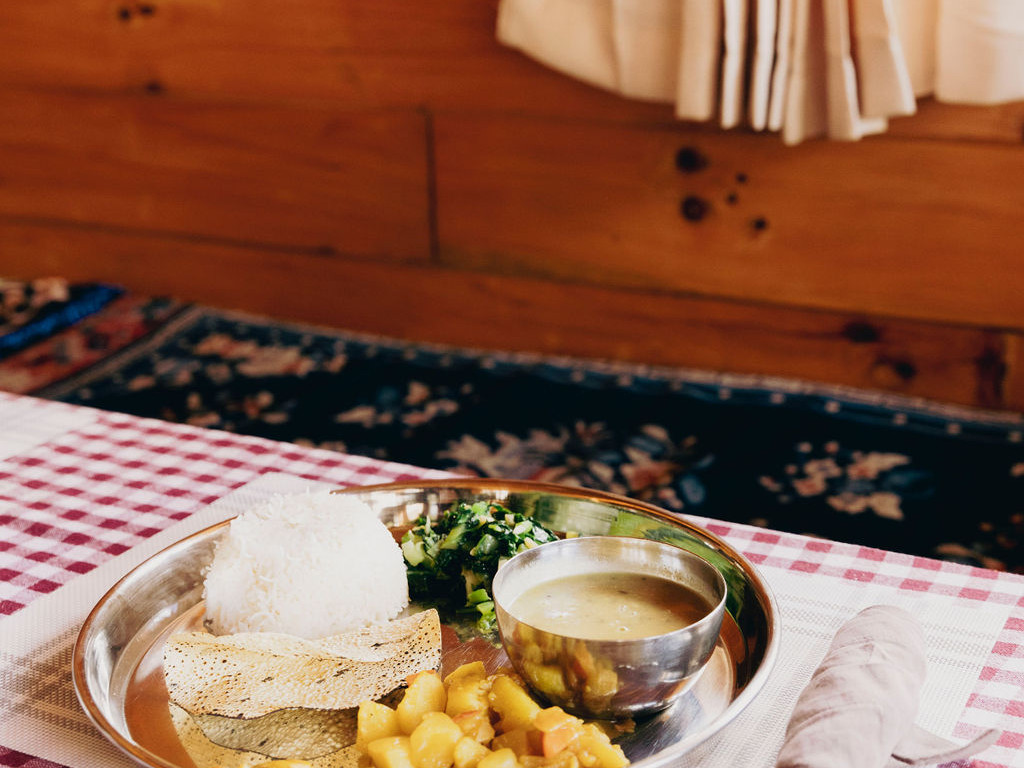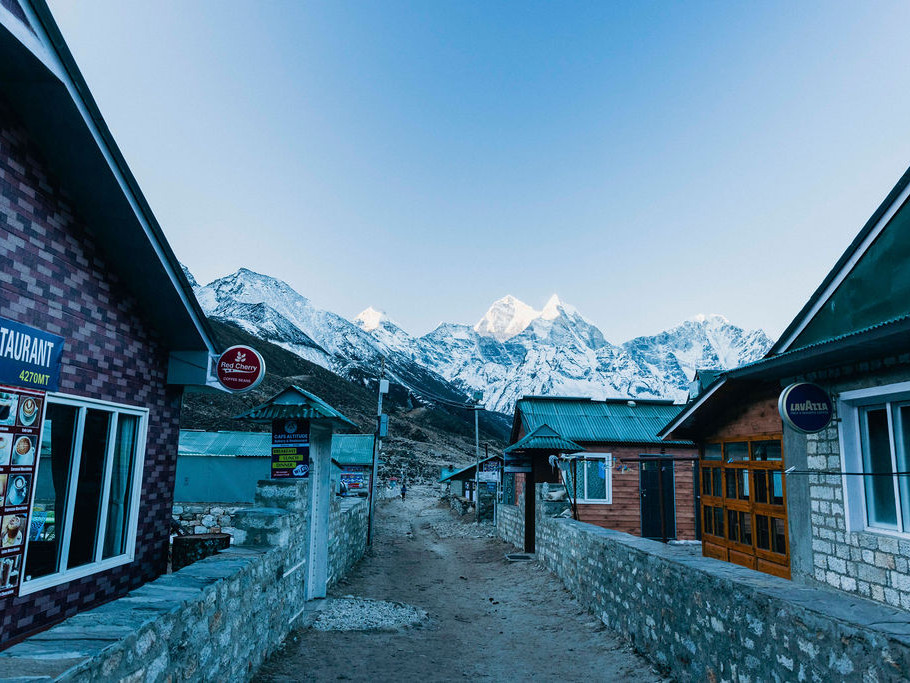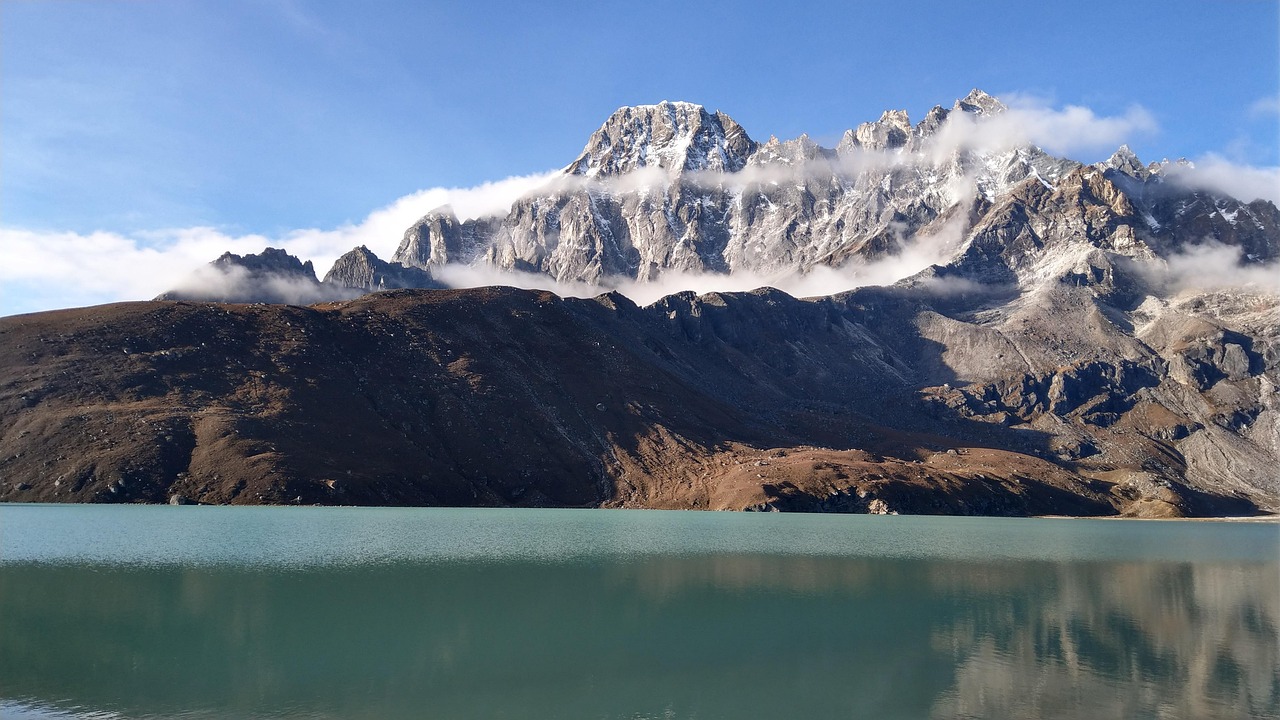South Pole Success & Vinson Arrivals
South Pole Success & Vinson Arrivals
Lots going on in the Southern Hemisphere.
We received great news from the South Pole today as our ski team officially reached 90° South (90°00′00″S), the southernmost point on the planet. A massive congratulations to:
- Jesse W.
- CTSS Guide Tomi C.
The team is now resting at camp and plans to fly back to Union Glacier tomorrow, just in time to meet the next inbound CTSS team.
Meanwhile, our first Vinson team is beginning to arrive in Punta Arenas, Chile, today. Over the next few days, they will complete gear checks, guide briefings, and flight orientations before heading south to Antarctica for their summit bid.
So far, conditions are lining up well down south, and we’ll continue to share updates as the season unfolds.
Images from the CTSS Archives
Everest Base Camp Advice from Mike Hamill
Everest Base Camp Advice from Mike Hamill
Share Expedition
A Personal Welcome to Climbing the Seven Summits' Everest Base Camp Trek & Stay from Mike Hamill
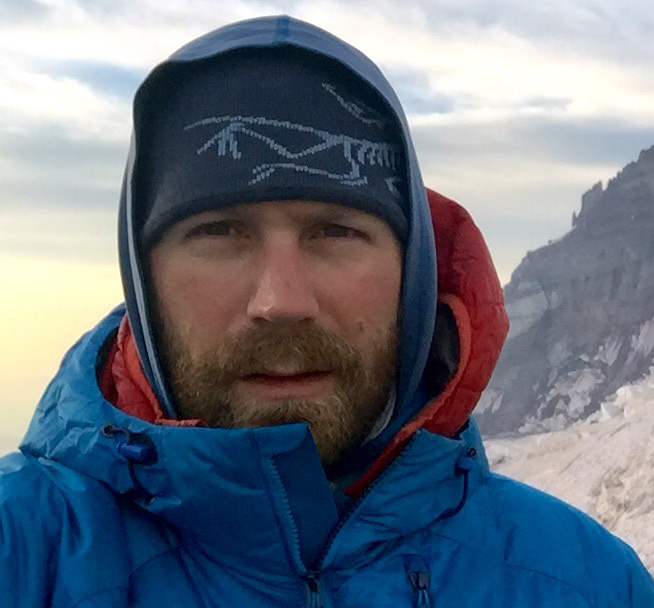
Throughout time, the human desire to explore new places has been part of our DNA, and the world’s highest mountain, Everest, is an incredible draw. Trekking to its Everest Base Camp is one of the world’s most sought-after adventures and for good reason. Not only is it spectacularly beautiful, but it is a challenging adventure that anyone should be proud of.
Trekking with a CTSS Everest expedition offers an opportunity to experience what a real Mt. Everest climbing team encounters, from the team’s thoughts and feelings during the approach to life at base camp. It’s a rare chance that few people have to gain a true insight into what it is to climb the world’s grandest peak. Most Base Camp treks aren’t affiliated with Everest expeditions and therefore aren’t able to stay at Base Camp proper. They simply reach the outskirts of the camp, tag ‘Trekker’s Rock’ and turn around. They rarely have the opportunity to spend time with or speak to the mountaineering community.
If you’re interested in mountaineering or what goes into an Everest expedition, then this is a great trek.
As the premier high altitude guide service, CTSS is committed to your safety and success. We are not a huge “trekking factory” but a modestly sized, nimble guide service that prides itself in customizing our program to your individual needs.
In choosing us, you are hiring the finest guides and logistical support in the industry. Benefiting from countless Himalayan expeditions and treks and drawing on decades of firsthand guiding experience, we have worked hard to refine our logistics to offer you the highest chance of success at exceptional value. In fact, I personally led our Everest Base Camp Trek.
In addition, we invite our Everest climbers to invite their friends and family to join them on this exotic journey by booking our Everest Base Camp Trek & Stay, Lobuche East, or Everest C2 and C3 programs. You will be able to share many cultural experiences together, and they will even be able to spend time with you at base camp and possibly above. This time together often makes these long expeditions more “do-able” from a time away perspective.
We look forward to sharing a great experience with you on your trek to Everest Base Camp.
Best regards,
Mike Hamill
Owner, Climbing the Seven Summits
Everest Base Camp Training & Prerequisites
Everest Base Camp Training & Prerequisites
Share Expedition
Experience Level
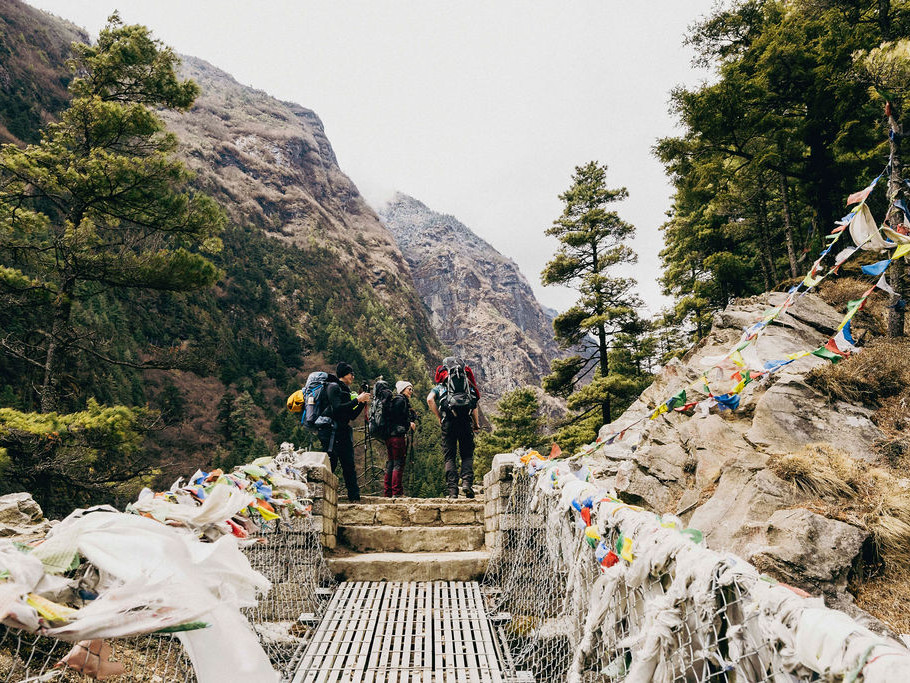
Trekking to Everest Base Camp is a physical challenge, but it is achievable for anyone who trains, prepares, and brings a positive mindset. You do not need prior mountaineering experience for this program; no technical climbing, crampon use, or ropework is required. What matters most is arriving in good physical condition, a willingness to hike for multiple hours a day, and the ability to acclimate to altitude at a steady, conservative pace.
Our itinerary is deliberately designed with a gradual acclimatization schedule, giving your body time to adapt and allowing you to enjoy the cultural and scenic highlights of the Khumbu Valley. If you are unsure whether your experience or fitness level is a good match, reach out. We take pride in helping trekkers prepare and succeed on this journey.
If you’re interested in progressing into technical mountaineering after your trek, consider exploring our Mount Baker Alpine Academy or our Lobuche East climb, both of which build foundational skills for future climbing objectives.
Physical Training
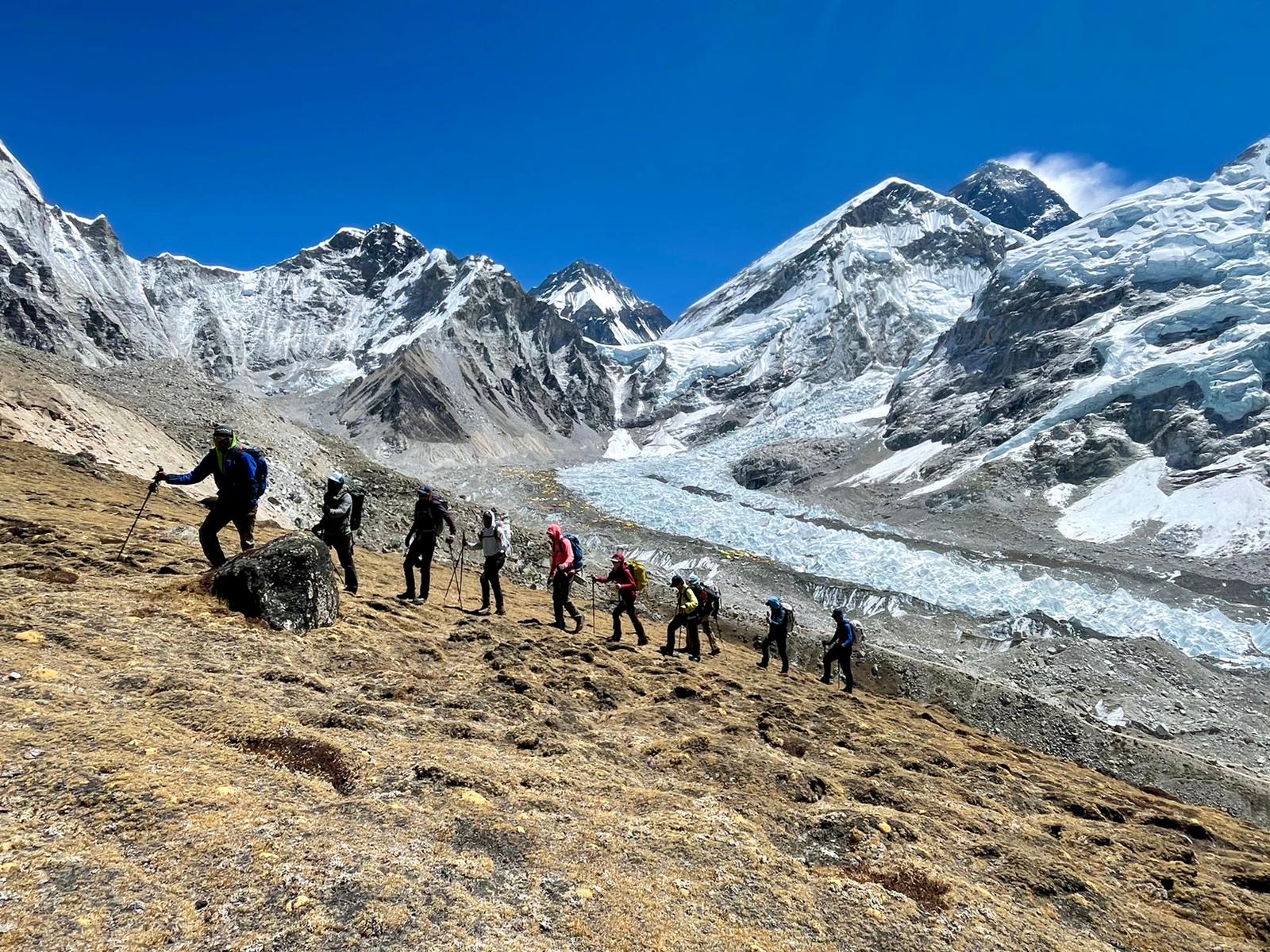
Everest Base Camp is a multi-day, high-altitude trek that rewards consistency, endurance, and preparation. You should be able to hike comfortably for several hours at a time while carrying a light pack (typically 10–15 lbs) and repeat this effort day after day. The stronger you are, the more you will enjoy the experience.
We recommend that you:
- Begin focused training at least 8–12 weeks before your trek.
- Train at least 4-5 days a week for an hour or more
- Prioritize endurance-based workouts such as hiking, stair climbing, incline walking, or long, low-intensity cardio sessions.
- Include strength training for your legs and core, and maintain a stretching or yoga routine to support mobility and recovery.
- Incorporate several back-to-back training days to simulate the multi-day nature of the trek.
Mindset
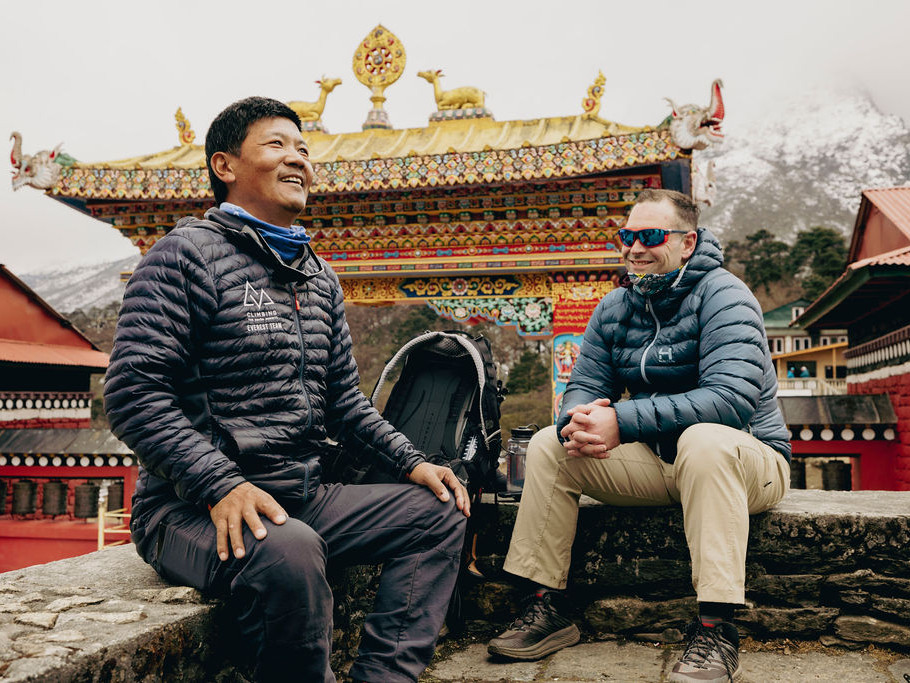
Mindset and mental preparation are integral to your success on any peak. You should be prepared:
- To be away from home/work for the duration of your climb
- Have a desire for rugged adventure travel
- Be open to receiving and deferring to guidance, support, and advice from your guides/expedition leaders (even if you are an experienced mountaineer)
- Be comfortable having open conversations with your guides
- Be able to work well in a team environment by being supportive and respectful of fellow teammates
- Be humble, respectful, and considerate even under pressure
Everest Base Camp Beta & Route
Everest Base Camp Beta & Route
Share Expedition
Elevation: 17,598 feet (5,364 meters)
Duration: 20 days
Continent: Asia
Route: Everest Base Camp (South Side) via the Khumbu Valley
Difficulty: Beginner
Route Choice
Our trek to Everest Base Camp involves both moving days, where you will trek to the next village, interspersed with rest and acclimatization days. The slow ascent up the Khumbu Valley is essential to allow your body time to acclimate and to give yourself a chance to explore each village. On some rest days, we’ll take a small day hike up to points of interest to give our bodies new high points.
While each village has its own charm, a visit to Tengboche Monastery is often considered one of the highlights of the trek. An important cultural landmark for the Sherpa and steeped in mountaineering history, the Tengboche Monastery is a unique and fantastic place to see for yourself.
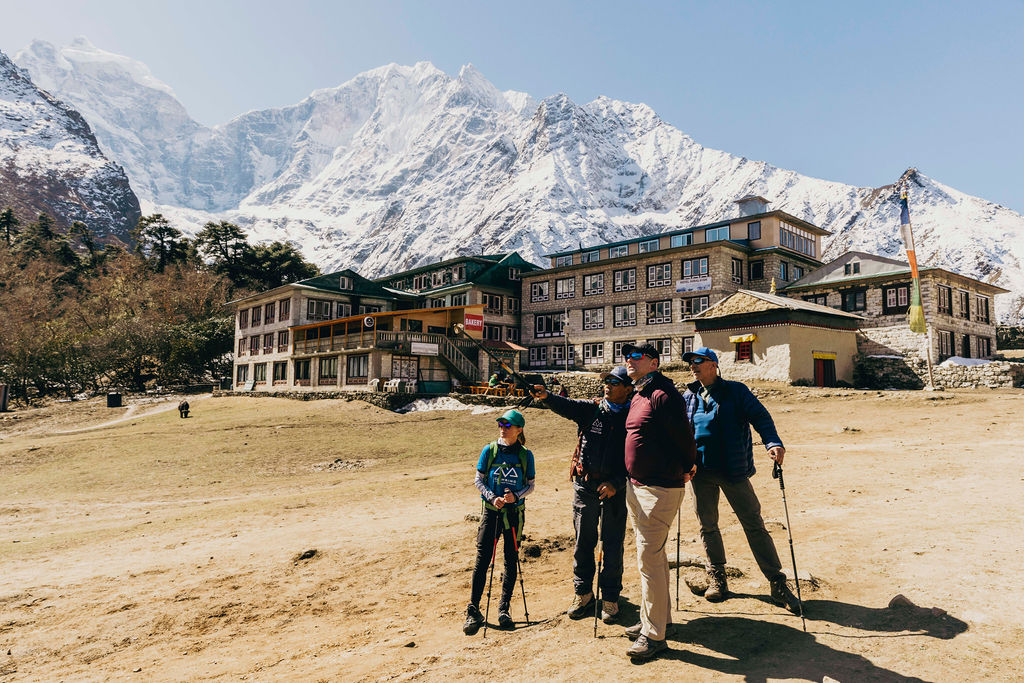
Each trekking morning, after waking up and having breakfast at the teahouse, it’s time to load your daypack and hit the trail. Porters and yaks will carry most of your gear to your next night’s stay, allowing you to trek light and carry only what you need for the day.
Most days, we walk 4 to 6 hours on the trail at a moderate pace, with occasional days of longer stretches. Over the years, we’ve refined our trekking schedule to make the best of our move, rest, and move itinerary. You won’t sleep more than 1,500ft (460m) higher than the night before, with the one exception (Phakding to Namche) occurring at the lower elevations near the beginning of the trek when high altitude issues are less prominent.
After each significant elevation gain, our teams will rest for a day, with a day hike to get the blood flowing and see the surrounding countryside. For many experienced hikers, the mileage and elevation gains each day are moderate, but taking frequent rest days is essential for acclimatization. Plus, you can’t beat the scenery throughout the trek. Relaxing with a hot drink in front of your teahouse while you watch the sunset illuminate the tallest peaks in the world is unforgettable.
Climbing up to Lobuche High Camp on Day 11 of your trek is a fantastic opportunity not available to most Everest Base Camp trekkers. While the trail to high camp isn’t very technical, it rises high above the valley and offers spectacular views of Ama Dablam, Everest, Pokalde, and the entire Khumbu Valley. As you descend from Lobuche High Camp, your trekking team will split from the climbing teams as they will continue climbing to the summit of Lobuche East, while you head to Everest Base Camp.
As the trekking team arrives at Everest Base Camp, you’ll be welcomed by our fantastic staff and tents ready for you to move into. Our itinerary includes two nights and one full day at Everest Base Camp proper, an experience most trekkers will never have. Weather permitting, you will have the option to take part in a beginner-friendly climbing clinic with a spin on some nearby fixed lines and explore the lower edge of the Khumbu Glacier just outside camp. Our chefs will make sure you are well fed throughout your stay.
After twp nights at Everest Base Camp, you will begin your descent down the valley, retracing your steps. You will be surprised by how different the trek down feels: the views will be different, you will feel stronger, and the terrain will feel easier with your new acclimatization. CTSS’s standard return trek takes 3 days, descending to Lukla, stopping in Pheriche and Namche for 1 night each along the way.
Back in Lukla, it’s all about the weather and flight schedules. Most teams can fly out of Lukla without delays, but as always, it is best to acknowledge the possibility of weather-related delays. If you’re looking for something different, our Gokyo Lakes Extension is a fantastic alternative to the standard descent from Everest Base Camp.
How to Choose The Right Trek to Everest Base Camp
How to Choose The Right Trek to Everest Base Camp
Share Expedition
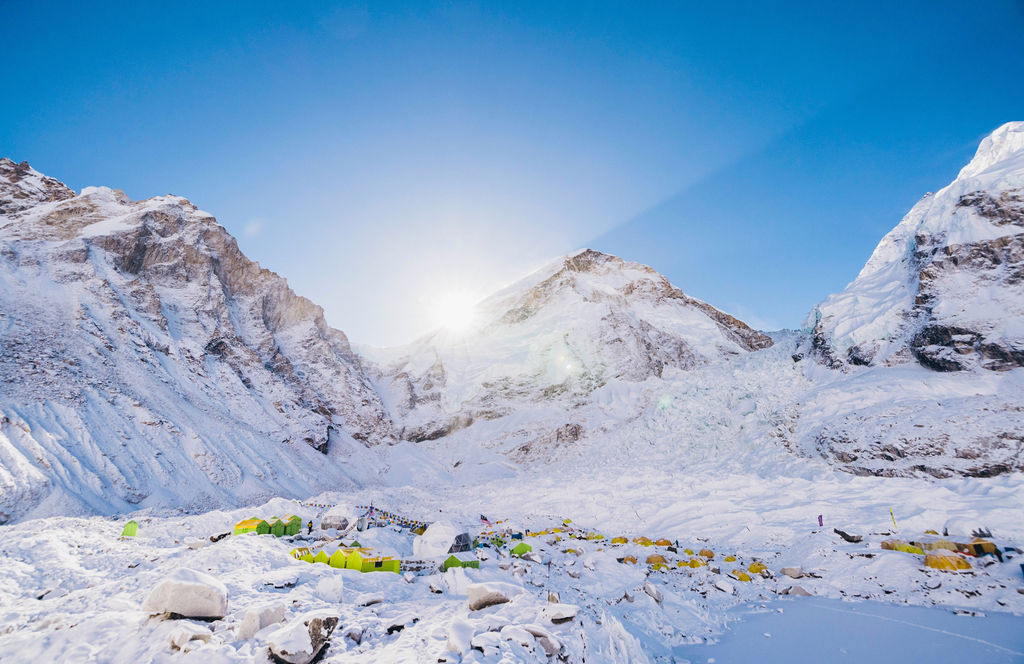
Researching and choosing the right expedition company to support you and help guide you through all logistics, as well as be there for you on the mountain, is important. You want to do your homework so you feel 100% confident in your choice and can focus on the climb.
We encourage you to compare leadership, logistics, accommodations, food quality, acclimatization strategy, and professionalism across operators. We’ve built this program carefully to offer the strongest leadership, the most thoughtful itinerary, and the highest level of support—while still delivering the best pricing in the industry. Strong, well-cared-for trekkers are successful trekkers.
Safety & Success
Your safety and success are the top priorities, in that order.
A climbing or trekking company should invest heavily in planning, leadership, and systems that protect your well-being, and we take that responsibility seriously. We have an unparalleled safety record, and our clientele’s well-being factors into every decision we make while on expeditions. Our approach is grounded in risk management, clear judgment, and decades of Himalayan experience. Our teams carry multiple communication devices, comprehensive medical kits, and high-quality equipment to ensure a controlled and well-managed environment throughout your time in the Khumbu.
At CTSS, your safety and experience are shaped by one of the most accomplished leadership teams in the industry. All of our Himalayan programs are overseen by CTSS owner Mike Hamill, one of the world’s most respected high-altitude mountaineers and expedition leaders. With more than two decades of guiding experience, six Everest summits, and a 91% global expedition success rate, Mike sets the strategic standards, safety protocols, and program design that define our approach in the Khumbu.
Your Everest Base Camp Trek & Stay will be led by a seasoned, expert CTSS guide with extensive experience in Nepal and a proven track record at altitude. Paired with our world-class Sherpa team, your leadership ensures a thoughtful acclimatization schedule, strong logistical support, and a safe, well-managed experience from Lukla to Base Camp. Our philosophy is conservative and deliberate, built entirely around giving trekkers the best possible chance to feel well, adapt smoothly, and enjoy every step of this iconic journey.
We take a conservative, well-designed acclimatization progression to support your health and comfort at altitude. Many operators rush clients up the Khumbu Valley to cut costs or shorten schedules, often resulting in ill trekkers and poor outcomes. Our strategy is slow, deliberate, and built around your success: more time to adapt, more time to explore, and more time to enjoy the cultural richness of the Khumbu. With CTSS, you benefit from world-class leadership, meticulous planning, and an approach that prioritizes safety, preparedness, and the quality of your overall experience.
Decision-making at altitude is critical, and our guides are among the most experienced and trusted professionals in the Khumbu. They bring deep regional knowledge, strong judgment, and a calm, measured approach to every stage of the trek. All of our Himalayan programs follow a conservative acclimatization schedule designed to reduce altitude-related risks and give trekkers the best possible chance to feel strong, healthy, and successful throughout their journey.
Leadership
Our guide team is highly qualified and includes some of the most highly experienced climbers in the world. Chosen for their attention to detail, safety records, and with their fun, genuine, and caring personalities, we have no hesitation in saying they are the best. Mike Hamill, CTSS Founder and Owner, holds the CTSS staff to the same high standards he holds himself to.
Who you choose for you expedition organization and leadership is a big deal; it can be the difference between a great trek and a miserable, potentially dangerous one, and you only want the best in your corner. The fact that Mike and his guides have an unprecedented safety record should be a paramount consideration in who you choose to climb with.
Our Sherpa team is the best of the best and is led by our Sirdar, Tendi Sherpa. Tendi is one of the most respected members of the Everest and Lhotse community and has completed a dozen Everest summits on both the south and north sides of the mountain, in addition to numerous other summits worldwide. Tendi is an internationally certified guide, co-owns a logistics company based in Kathmandu, and is the best in the business.
He holds his team of Sherpa to the same high standard he holds himself to and hand-picks only the strongest, most skilled, and most trusted Sherpa friends. Some of our Sherpa team are fully IFMGA-certified, and all are incredibly strong and proficient climbers. Tendi and his team will work incredibly hard to make your trek a success and become friends for life. Tendi and the Sherpa team undergo extensive technical and customer service training before each expedition to ensure their skills are sharp. Our Sherpa team is paid more than any other Sherpa team on the mountain because we believe in them and want them to feel valued and well cared for. This will ensure they do their best work for you. You will quickly notice our Sherpa team has many character traits, including hard work, humility, friendliness, gregariousness, and, not to mention, strength.
Progression Specialists
We are proud to be a holistic mountaineering guiding service committed to keeping you a happy climber. We work with trekkers and mountaineers throughout their lifelong adventures, getting to know each individual as they progress. This means we are deeply invested not only in your safety and success but also in your goals, your learning, your journey, and your satisfaction. An Everest Base Camp-only trek operator only needs your business once, whether you make it to Base Camp or not, get altitude sick or not. Our goal is for you to trek with us and stick with us, expedition after expedition.
Our team looks forward to helping you create a path that makes your big mountain dreams come true. You won’t get a generalized plan for your journey from our team. You get a custom-tailored plan designed for you, your budget, and your timeline. We are always ready to answer your questions and provide personalized support, rather than becoming just another faceless online booking platform.
Values & Philosophy
Does an operator have strong values?
This is sometimes a little harder to identify, as it’s more of a feeling than a sales pitch, but you should get a sense of a company through their interactions, care factor, attention to detail, corporate social responsibility, and responses to you.
High-altitude trekking can be high-risk and stressful, so choose an operator with strong core values and a team mentality that aligns with yours. When things get challenging, you can rely on open lines of communication and know they will do what they can to support you.
It is this team cohesiveness that flows through to each individual trekker and helps them reach their goals.
Everest Base Camp Trek Travel Guide
Everest Base Camp Trek Travel Guide
Share Expedition
Expedition Meets in: Kathmandu, Nepal
Continent: Asia
Currency: Nepalese Rupee
Population: 862,400
Official Language: Nepali
Seasons to climb: March – May & September – November
Things You Need to Know:
Meeting Location: The first day of your itinerary is an arrival day, so you can book flights to arrive in KTM at any time on that day. If you are arriving earlier than the first day, please let us know so we can book additional nights at the same hotel for you. Note: any extra expenses incurred due to early arrival are your responsibility and must be paid directly.
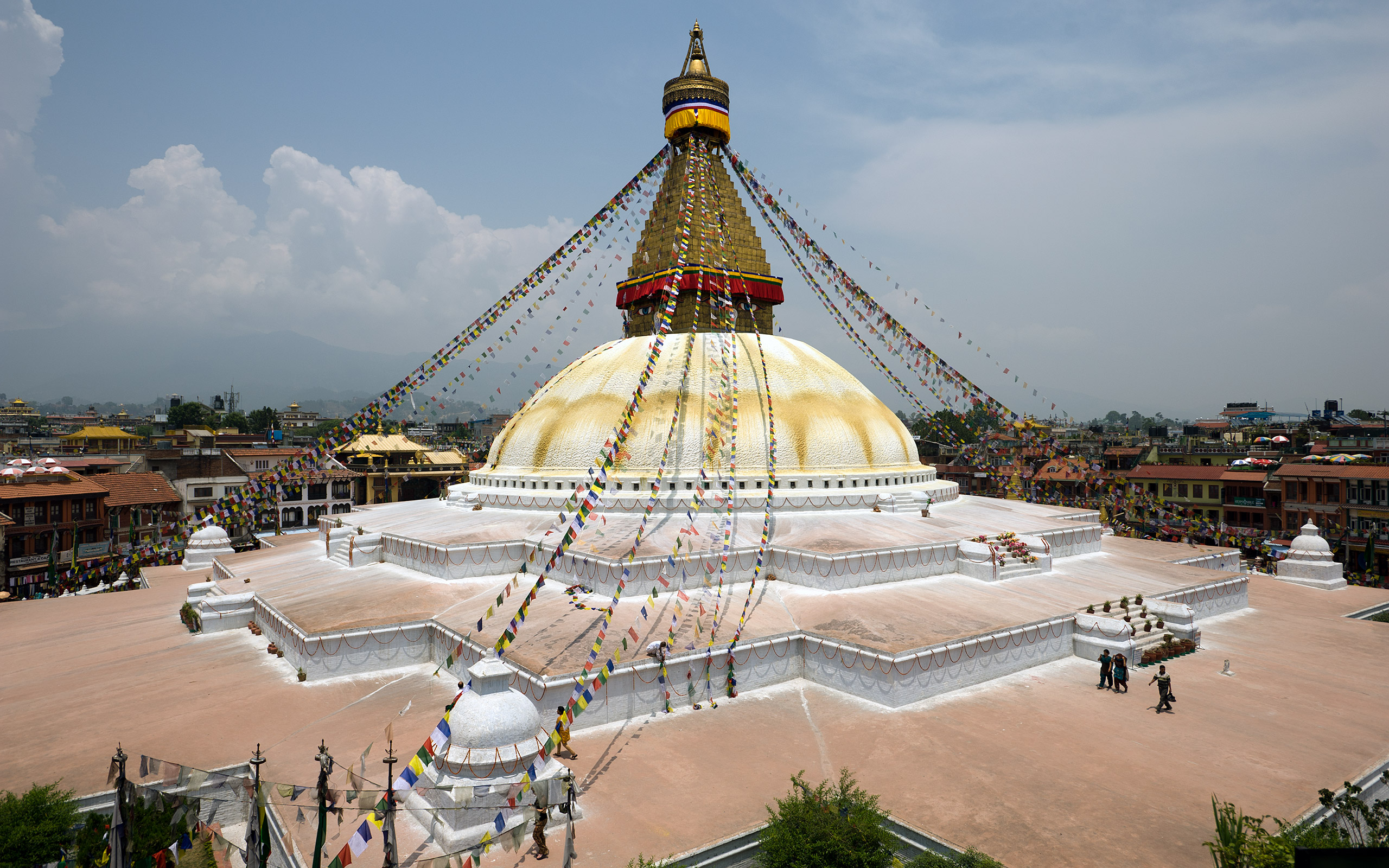
Upon clearing customs and collecting your baggage at the airport, a member of our team will meet you and transport you to our hotel. Once you arrive at the hotel and check in, please settle in. Today is a free day to relax and recover from jet lag. Your Guides will swing by as soon as they can to introduce themselves and answer questions. Please leave a message at reception to confirm your arrival.
Our hotel in Kathmandu provides very comfortable accommodations. Feel free to explore the hotel and the surrounding area, but don’t wander too far until you’ve made contact with one of your guides. You will formally meet the team in the morning of Day 2 for Gear Checks and a Guide Briefing.
Typically, we don’t give out team members’ personal information before the trip for privacy reasons. Some people prefer not to have their information publicly available, and we want to respect their wishes. There is plenty of time to get to know one another in Kathmandu and on the trek, and share contact details.
You will be traveling with other members of our Everest Base Camp trekking team, as well as climbers heading to Everest, Lhotse, Lobuche, and our 3 Peaks climb. At the hotel, you will have the opportunity to begin to get to know the climbers as well as your fellow trekkers, as you’ll be spending the next 10-12 days working together as a team to reach Everest Base Camp.
Tourist Visas: Nepal’s visa policy varies significantly by country. It is your responsibility to research current visa requirements for your home country. Most foreign nationals will need to pay for a visa on arrival, but do not need to apply in advance. However, a few countries require a visa in advance. Indian citizens do not require a visa to travel to Nepal.
Bring at least 3 passport photos with you for entry into Nepal. You will need one for your entry visa and one for your climbing/trekking permit; it’s always good to have an extra. Please contact CTSS as early as possible if you have any questions about Nepalese visas
It is your responsibility to research visa requirements for your country of passport issuance.
Getting There: Flying into Tribhuvan International Airport (KTM) is straightforward. KTM is served by several major airlines and is a common destination for adventure travelers. As you book tickets, please pay special attention to your flight durations and layovers. Note that if your layover at a connecting airport exceeds 12 hours, you may be required to collect and recheck your baggage and book a hotel. We highly recommend booking flexible-return-date tickets. Remember, things seldom move quickly in Nepal—arriving in KTM, clearing customs, and purchasing your visa on arrival may take an hour or more. Refer to the Travel Details section below for more details.
Domestic Transportation: Your domestic transportation within Nepal is included in your expedition.
Money: It is better to have more money than you need than to have too little. Most things are covered on the trip once you land in Nepal (check the inclusions and exclusions list for details). The cash that you need to bring includes money to cover expenses for a potential early departure (not often, but sometimes this occurs), miscellaneous expenses like extra hotel nights, non-team meals in town or if arriving early or departing late, shopping, alcohol, specialty coffees, bottled water or snacks, money for hotels in transit if applicable, visas, Sherpa tip pool, and guide tips (customary, but optional).
In general, we recommend bringing more in cash than you anticipate needing, plus at least one, preferably 2, credit and debit cards. When all goes well, you’ll head home with most of your money still in hand (unless you shop for souvenirs in Kathmandu!). However, in the event of an early departure or an emergency, it is crucial to have the resources on hand to cover these costs, as ATMs are scarce in the Khumbu.
Tipping: Tipping is customary in many situations in Nepal. At restaurants, a 10% tip is acceptable, and if someone goes above and beyond to help you, a small tip goes a long way.
We will collect and pool our Sherpa and Porter tips for the expedition, but if you wish to tip a staff member who has been particularly helpful, that is acceptable.
Electrical: Nepal’s electrical grid runs at 230 volts and 50 hertz. Some common US appliances may not be compatible as they are designed for 110V, 60Hz power. Check your device specifications (especially the Hertz rating) and bring an adapter to ensure compatibility.
Common plug types in Nepal include: Type C, Type D, and Type M.
You can charge your electronic devices at teahouses en route to base camp using a North American plug without an adapter at your own expense. Once at Everest Base Camp, we will also have power and power cords that fit North American plugs. Charging at base camp is dependent on the sun or the generator, so it won’t be available all the time, but we will try to make it available enough to meet your needs.
Potable Water & Food Suggestions: It is recommended to opt for bottled water or treat your own tap water while traveling in Nepal. Water served at Base Camp is safe to drink, but all other water should be treated or bottled.
Most food at decent restaurants in Kathmandu is fine, and you shouldn’t have any issues, but it is best to play it safe. Avoid fresh salads unless you are at a highly reputable hotel or restaurant, and watch for undercooked food. With changes in food and environment, a slightly upset stomach can be normal as your body adjusts to the local cuisine.
Language: English is widely used in business and government in the Kathmandu area. In the Khumbu region, English speakers are common, especially in high-tourism areas, but most of the local population does not speak English or other non-indigenous languages.
Vaccinations: Rules and regulations surrounding vaccinations may change rapidly. It is your responsibility to check Nepalese government websites to ensure compliance with any vaccination requirements.
Make sure your immunizations are up to date before flying to Nepal. Consult your doctor, a local travel clinic, or the Centers for Disease Control and Prevention (CDC) for up-to-date information on immunizations for Nepal. Recommended immunizations include COVID-19, diphtheria-tetanus (DPT), polio, mumps-measles-rubella (MMR), meningitis, hepatitis A and B, cholera and typhoid, and rabies. Malaria shouldn’t be a problem in Kathmandu or on the climb. If you plan to travel to lower-elevation areas in Nepal before or after the climb, you should consider malaria chemoprophylaxis.
Rabies is rare but present in Nepal’s dog population. Avoid petting dogs you do not know and stay alert for aggressive animals. If you are overly concerned about rabies, consider receiving the prophylactic vaccine.
Accommodations: All hotel and teahouse rooms are double occupancy unless you have selected the single rooming option and paid the add-on fee. If you want a single room, please let us know, and we can add the fee to your balance to cover the additional expense. Sometimes hotels and teahouses are full during the climbing season and may not have enough space to accommodate single rooming, but we will do our best to accommodate.
Gear Storage: You will have secure storage for one duffel in Kathmandu. This is a great place to leave your in-town or dressier clothes and any items deemed unnecessary during your gear check.
Cell Phone Coverage: Nepal Country Code: +977
There is cell service with Ncell in Kathmandu & most of the way up the trek to base camp (with cheaper data than the 3rd-party Everest Wi-Fi that the teahouses resell), but not at base camp. You can use your personal cell phone to connect to the local network, paying roaming charges if you prefer, or buy a local Ncell SIM and recharge it.
The Ncell store is close to our hotel, and we are happy to show you where it is. You can also tie in to the 3rd-party Everest wifi network at base camp at your own expense and call on FaceTime, WhatsApp, Facebook, or Skype. Make sure to turn off data for any apps you aren’t using that could eat your data allowance.
Internet: There is third-party Wi-Fi in teahouses and cafes along the route to base camp, and if you have a smartphone or tablet, you can connect. If you bring a Wi-Fi device, we’d suggest keeping it safe and waterproofed in your trekking packs so it doesn’t break in your duffels. At Base Camp, Wi-Fi is available through a third party for individual purchase, so you only pay for what you use. It is sold in small allotments, and data can run out quickly, so use it wisely.
Additional Nights at Everest Base Camp
Additional Nights at Everest Base Camp
Share Expedition
Additional Nights at Everest Base Camp
Price: $350 USD per night
If trekkers want to stay at Everest Base Camp beyond the itinerary, we can add nights for $350 USD per night. If you plan to stay longer than a week, you will need a Nuptse climbing permit, which allows you to stay at base camp throughout the Everest expedition season. Please contact us directly to arrange this.
Single Rooming Option
Single Rooming Option
Price: $1,000 USD
We are happy to organize single-room accommodations throughout the expedition for you. If you aren’t price-sensitive, you snore, or you are easily awakened by others who do, this might be a great option.
We stay at some of the nicest teahouses in the Khumbu Valley throughout our trek to keep you healthy and comfortable. Many teahouses offer room upgrades that may include an en suite bathroom with a hot shower and additional space, whereas our standard rooms generally have a shared bathroom and shower for an additional fee.
EBC Trek + Gokyo Lakes Trek
EBC Trek + Gokyo Lakes Trek
Everest Base Camp Trek + Gokyo Lakes Trek: $6,990 USD
- Annually: April 3rd – April 26nd
Once you’ve achieved your goal of Everest Base Camp, why not make your return a little different? Rather than retracing your footprints back down the Khumbu valley, instead spend a few days seeking some new scenery by visiting the Gokyo region. Gokyo itself is a small hamlet of stone houses and one of the highest settlements in the world, surrounded by truly breathtaking vistas, mountains, and glaciers.
You’ll see and experience more of these amazing, mighty Himalayan mountains, climb the famous Cho La Pass (5,420m) escape the madding crowd,s and view the stunning Gokyo Lakes before rejoining the main trail at Namche Bazaar for the final day’s trek back to Lukla.
This extension is best suited to experienced and fit trekkers who are keen to get off the beaten path and further challenge themselves
This itinerary is a rough estimate and will be adjusted according to weather and conditions. This is adventure travel, meaning things rarely go as planned, and this schedule will likely change. Climbers need to be adaptable and maintain a positive attitude.
We always recommend climbers arrive in Kathmandu one day early to avoid travel delays or issues with lost baggage. The client is responsible for the added expenses (hotel/food/sightseeing) of this extra day. Please let us know if we need to organize logistics for your early arrival or accommodation upgrades.
- Day 1: Team Arrives. Pick up from airport and transfer to hotel.
- Day 2: Gear Checks/Guide Briefing. Free afternoon in KTM
- Day 3: Fly to Lukla/Phakding
- Day 4: Trek to Namche
- Day 5: Rest/Acclimatize hike Namche
- Day 6: Trek to Tengboche
- Day 7: Rest/Acclimatize hike Tengboche. Visit Tengboche Monastery
- Day 8: Trek to Pheriche
- Day 9: Rest/Acclimatize hike Pheriche. Visit HRA
- Day 10: Trek to Lobuche Base Camp
- Day 11: Acclimatization Climb Lobuche High Camp, return to Base Camp
- Day 12: Trek to Gorak Shep
- Day 13: Climb Kalapattar - Trek to Everest Base Camp
- Day 14: Everest Base Camp Day (Climbing Clinic)
- Day 15: Everest Base Camp to Dzongla
- Day 16: Dzongla to Dragnag via Cho La Pass
- Day 17: Dragnag to Gokyo via the Ngozumpa Glacier
- Day 18: Explore the Gokyo Region with options to climb Gokyo Ri or trek further up valley to Gokyo Lakes Lakes and climb Gokyo Peak
- Day 19: Trek to Machermo
- Day 20: Trek to Namche Bazaar
- Day 21: Trek to Lukla
- Day 22: Fly Lukla to Kathmandu
- Day 23: Contingency Day
- Day 24: Fly home
Our expeditions are designed to be fully inclusive, except for certain services and personal items, such as flights, gear, and insurance.
We highly recommend adding contingency days to the end of your trip and booking a flexible fare for the return flight. Flights can sometimes be delayed out of the Khumbu due to mountain weather. Please note CTSS covers one night in Kathmandu at the end of your trip.
Included in the Everest Base Camp Trek + Gokyo Lakes Trek:
- Professional trek leaders
- Leadership, strategy, logistics, and expedition oversight
- Airport transfers
- Accommodation in Kathmandu (double-occupancy)
- Welcome dinner
- Transportation associated with the program itinerary
- Flights to and from Lukla
- Accommodation in lodges and teahouses in the Khumbu Valley (double-occupancy)
- 2x nights accommodation at Everest Base Camp Proper (double-occupancy)
- Tent accommodation at Lobuche Base Camp
- Breakfast and dinner during the expedition
- Park fees and trekking permits
- Porters to carry trekking duffels on the trek
- Mountain camp infrastructure and logistics
- Group gear that is not included in the expedition gear list
Excluded in the Everest Base Camp Trek + Gokyo Lakes Trek:
- International Flight to/from Kathmandu, Nepal
- Airport arrival or departure taxes
- Associated travel expenses (visas, passports, reciprocity fees, vaccination charges, excess baggage)
- Optional add-ons, excursions, or additional days before or after the scheduled program
- All costs incurred prior to the start date of the trip and after the end date
- Single-room accommodations, if desired and pre-booked
- All in-town restaurant meals (non-team meals in Kathmandu are your own responsibility)
- Bar tabs, minibars, hotel internet bills, laundry, etc.
- Personal climbing gear, equipment, and snacks (see Gear List for details)
- Sherpa tip pool ($300 for trekkers)
- Guide tips (customary but optional)
- Required trip insurance policy (trip cancellation, interruption, rescue & evacuation, medical treatment, repatriation, etc.)
- Unused contingency days at the end of your program (CTSS covers one night in the hotel in Kathmandu on your return; additional nights are your responsibility)
- Costs incurred as a result of events beyond the control of CTSS
- Expenses while on the expedition that are above and beyond the normal scope of the trip
- Rescue expenses or excess expenses above and beyond our normal trip costs
Kathmandu Cultural City Tour
Kathmandu Cultural City Tour
Share Expedition
Kathmandu Cultural City Tour
Price: $250 USD
Kathmandu is one of the most exciting, culturally rich cities in the world. Unique and overflowing with sights, smells, sounds, and tastes, it’s both chaotic and charming. A city of true contrast, it needs to be experienced to be understood. During our Kathmandu Cultural Tour, an English-speaking guide will lead you through the city’s best historical and UNESCO sites.

